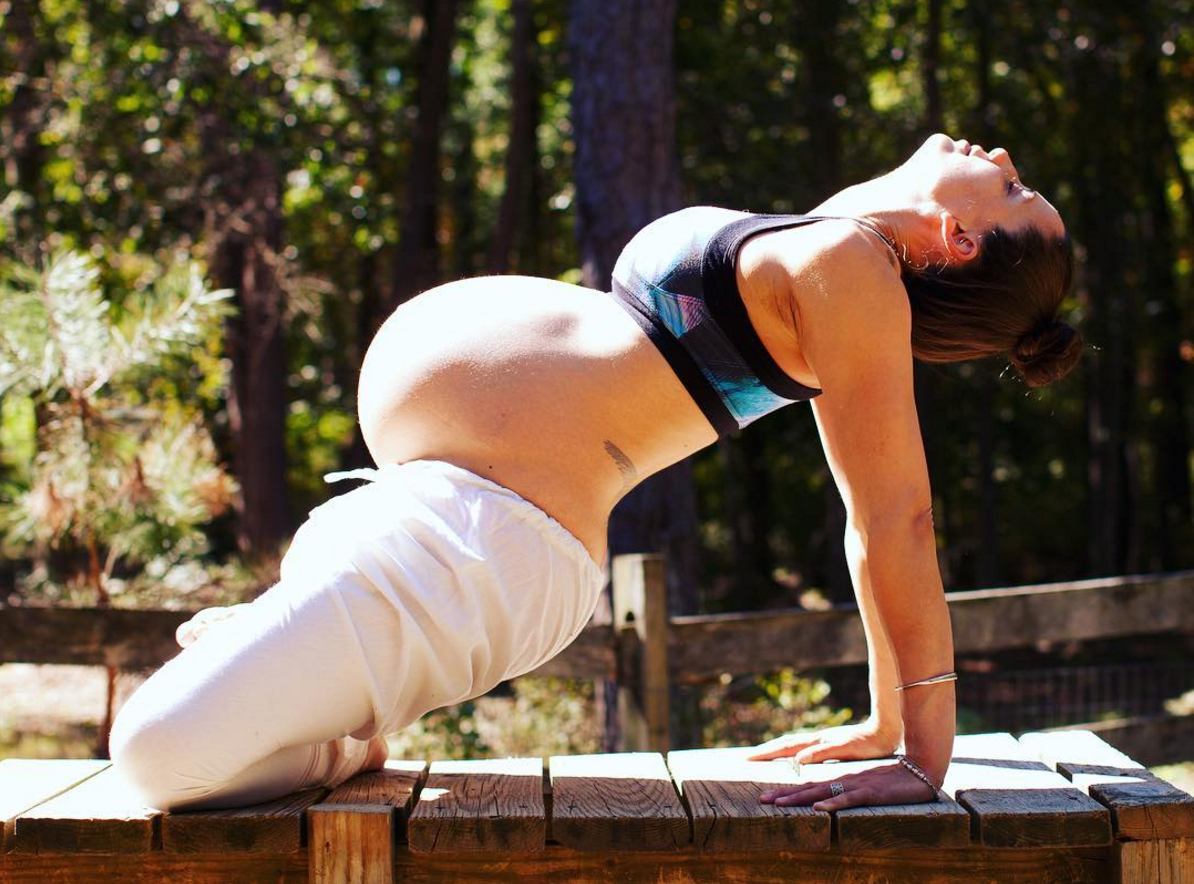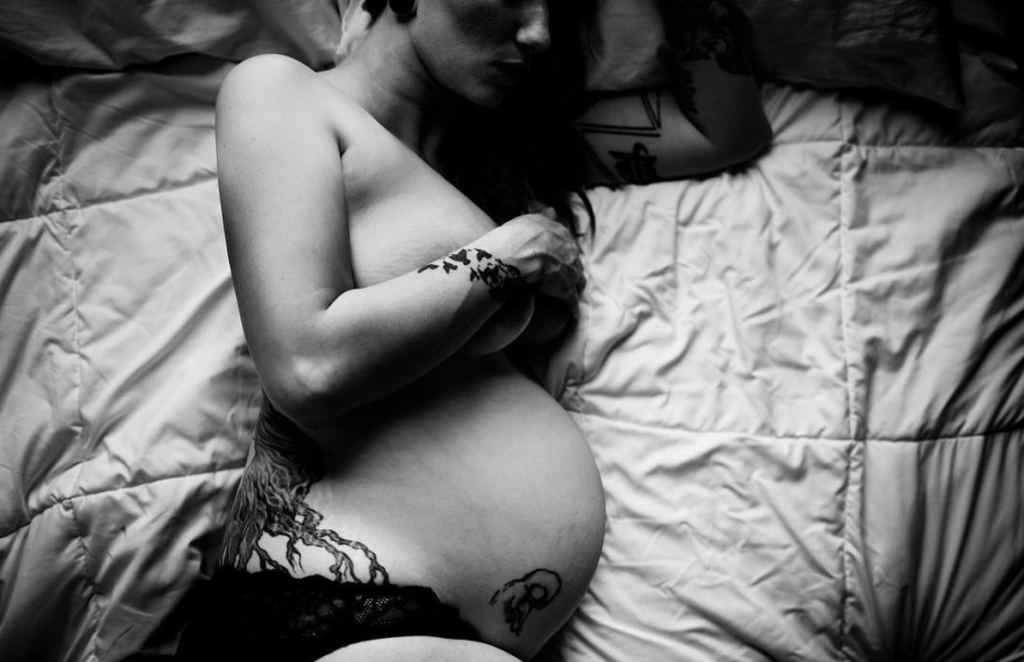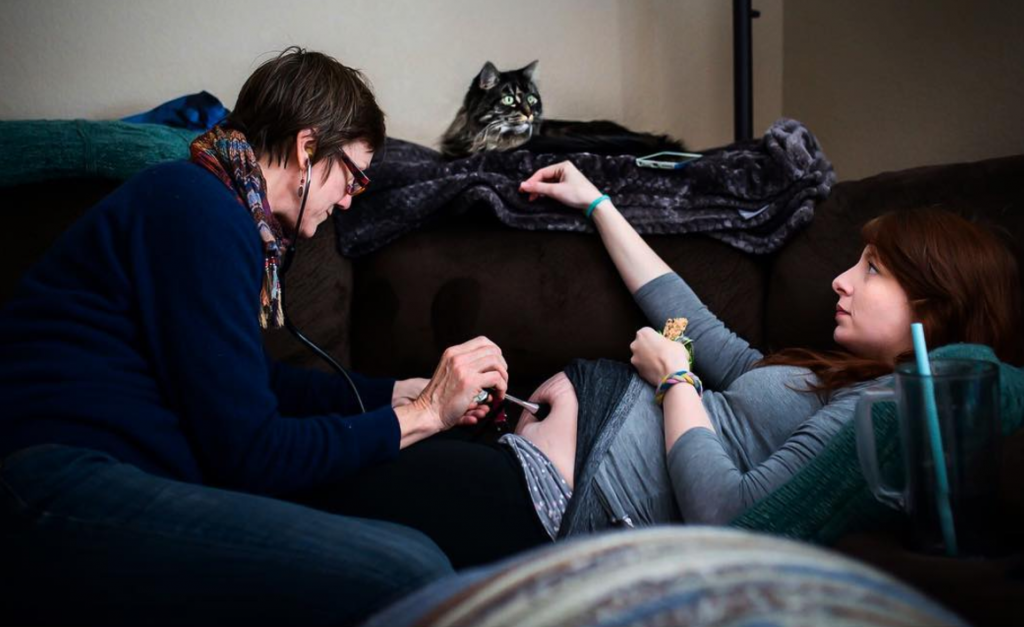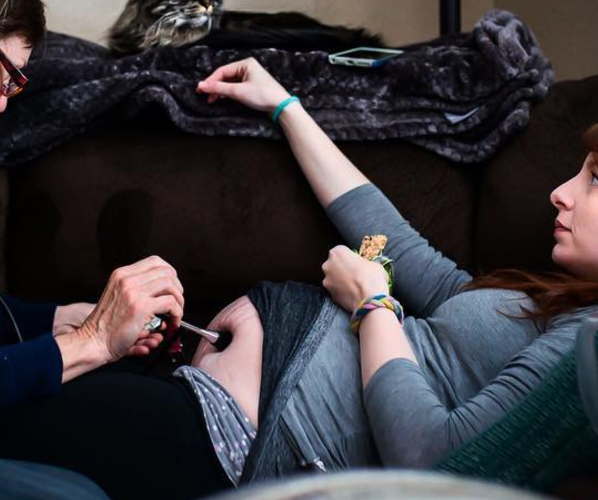Entering the third trimester is a great milestone. You are two-thirds through your pregnancy, and will soon meet your baby! The third trimester is basically comprised of you and your baby growing! There are not too many major changes from the second trimester to the third, except for a list of possible ailments. Keep in mind that although the following discomforts are common, they are not inclusive to all pregnant women. Here are some things to possibly expect during this phase.
Body changes during the third trimester

Swollen Ankles, feet, hands and face
An increase in body fluids during pregnancy softens the body and allows room for the baby to grow. This increase can cause swollen body parts (edema), and most women will experience it to some degree.
Ways to combat pregnancy induced swelling
Frequent breaks from sitting or standing periods will help circulation. When sitting or resting, it can be helpful to prop feet up on a stool or chair to elevate your legs and keep fluid from pooling in your lower extremities. Wear comfortable shoes, flip flops, or no shoes at all to ease restriction. Keep legs uncrossed when sitting.
When to worry about swelling
Edema accompanied with other symptoms can indicate preeclampsia (pregnancy induced high blood pressure), so keep an eye out for the following symptoms. Edema associated with:
- One leg more swollen than the other- can indicate a blood clot
- Chronic headaches and vision changes
- Chest pains and difficulty breathing
Any of these symptoms are cause for calling your doctor right away.
Itchy skin during pregnancy
Pregnancy hormones accompanied by growing, stretching skin can lead to skin irritations and itchiness. Dry skin and eczema are also common. Treat itchy skin by avoiding hot temperatures in baths and showers that can promote dryness. Use mild unscented soaps, moisturizer, cool wet compresses, and wear loose fitting clothing. An occasional oatmeal bath can also help to soothe irritated skin.
When to worry about itchiness
In about 1% of pregnant women, a condition called cholestasis can develop. This is a liver disease that causes intense itchiness, usually starting with the soles of feet and palms of hands that worsens at night. Call your doctor right away if you experience these symptoms. Listen to a birth story of a Birth Hour mama who experienced this.
PUPP is another semi-common skin condition that affects about 1 out of 150 births. Itchiness in the abdomen is accompanied by a rash or hives that can radiate to the thighs, buttocks and back. This condition is not dangerous, but is uncomfortable. Your healthcare provider can prescribe topical creams to treat the affected areas.
Braxton Hicks Contractions
These can be fun to experience for the first time. Your body is essentially “practicing” labor contractions, and these kind do not hurt. This tightening of uterine muscles can be a strange sensation to experience, but are nothing to be worried about. Most women have Braxton Hicks Contractions at some point, and they can be felt as early as the beginning of the third trimester. Some women, however do not experience them until they are very close to delivery.
How to tell the difference between Braxton Hicks and real contractions
Braxton Hicks contractions do not hurt, do not last for long periods of time and are random. If you are close to your due date and suspect contractions might be the real thing, start timing them. If there is a pattern to them, they do not stop upon laying down or changing positions, and they are uncomfortable or painful, those are good clues that you might be in labor.
“Baby Brain”
Although not scientifically supported, many women claim to have “baby brain” during pregnancy, meaning they are affected by a pregnancy fog of absentmindedness and forgetfulness. This could be due to hormonal changes, sleep deprivation, or the stress of a big life change approaching. There is suddenly more to think about, so focusing on normal daily tasks can be muddled with distractions. If you find yourself losing your car keys more often or unable to think of the word you need in the moment, know you are not alone!
Hemorrhoids during the Third Trimester
Hemorrhoids are swollen veins that are present in the anal area that can cause itchiness, bleeding, and discomfort, especially when having a bowel movement. The increased pressure on your large intestines from the weight of your uterus, which can further affect the sensitive area.
- Avoid straining when having a bowel movement.
- Eat a diet rich in fruits and vegetables containing fiber to avoid constipation. Broccoli, bok choy, kale, brussel sprouts, and cabbage are all good options.
- Drink lots of water.
- Do kegels exercises
- Sleep with a pillow between your legs.
- Don’t stand up or sit for long periods.
- Keep moving around.
- Apply cold pack to area.
- Use Tucks pads—total lifesaver!
Increased fatigue
You might start to feel tiredness similar to that of the first trimester. It’s a normal response to the increased weight you are carrying, and your body hard at work supporting an extra life. Couple that with sleep disturbances and the grind of daily life and it can leave pregnant mamas pretty wiped out. Try to listen when the exhaustion strikes. Take rests whenever you can, go to bed early, and slow down in general. Conserve the energy you do have and spend it on a few priorities per day. Here’s some reminders of how to get some extra rest and some ideas of how to meet your needs as a mother or mother-to-be!
Appetite changes during the third trimester
With your uterus expanding and pressing on your stomach and intestines, you may find your appetite decreasing. It may be harder to eat (and digest) large meals. Break up your meals into 4 or 5 smaller meals and snacks throughout the day. This can also help if you are experiencing indigestion or heartburn.
Third trimester sleeping challenges

Restless Leg Syndrome
Occurring in 20% of pregnant women, RLS occurs during sleep when there is an intense urge to move your legs. It can be quite uncomfortable and frustrating to continuously try to find a position that feels good to sleep in. Doctors aren’t sure of the exact cause, but some theories are: iron deficiency, a disturbance in the brain’s dopamine system, or a low blood cell count. There is increased risk if you have had it before, or have a family history of RLS.
Unfortunately there is currently not much to offer in terms of treatment. Exercise, good sleep habits, and keeping your mind active during the day all seem to help improve the condition. Restless Leg Syndrome does seem prone to striking mostly at night, so if you can, sneak in a nap to make up for lost sleep.
Insomnia in the third trimester
This can be due to discomfort or the ailments mentioned above, the increased frequency in urination, or your hormone changes. As frustrating as it is not to be able to sleep, there are some strategies that seem to help.
- Get up and do something. Sometimes just by giving in and changing scenery, our body is able to process and move on.
- Eating a snack, reading a book, listening to music, or browsing your favorite websites can offer the perfect distraction. You might even find that after a short amount of time you are tired again.
- Buy a body pillow for added support, or extra pillows to put in between legs. Make your bed as cozy as possible. Keep the air temperature cool.
- Practice regular sleeping habits and rituals. Eat a small snack and drink something warm prior to bed. Do a meditation or some breathing exercises. Keep the same bedtime every night and don’t allow any screens an hour or so prior to bedtime. Use some oils or lotions and do some gentle stretches. Train your brain to realize it’s time to sleep. Try some of these same rituals if you awaken in the middle of the night as well. The routine can help trigger muscle memory that now it’s time to relax.
Third trimester Leg Cramps
Doctors aren’t quite sure why involuntary muscle contractions in legs and feet sometimes happen during pregnancy. The episodes usually strike at night and awaken you with a massive charlie horse. When you are in the middle of a cramp, try flexing the muscle, which can sometimes release the contraction.
Preventing leg and feet cramps
- Do some daily calf stretches, as well as stretching the arches of your feet.
- Stay active. Keep muscles in shape and blood circulating by daily exercise.
- Drink enough water
- Wear comfy shoes
- Make sure you are getting enough magnesium in your diet which can help with muscle cramps. Some good sources are bananas, grains, beans, dried fruit, seeds, and nuts
Breast changes in the 3rd trimester
Your breasts are hard at work preparing to feed your baby. Colostrum, the nutrient-dense yellowish liquid that is present before your milk comes in has already started forming, and can start leaking. Wear some nursing pads to prevent staining and keep things dry.
3rd trimester pelvic pain
Your pelvis can widen 3-4 mm in prep for birth, causing pelvic soreness and pain (Gaudet, Tracy W. Body, Soul, and Baby: Bantam Dell, 2007. Print.). For relief, try acupuncture, massage, pelvic tilts, cold packs, or warm baths.
Occasionally the ligaments holding the pelvis in place will relax even further, making the pelvic joint unstable and causing intense pelvic pain. This is called Symphysis Pubis Dysfunction, or SPD. It causes pain while in upright positions or weight bearing activities, especially when lifting legs, like to put on a pair of pants. A pelvic support belt can be used to take the pressure and weight off of the ligaments and joints. Here is a good option.
Bladder changes at the end of pregnancy
Pregnant women are at greater risk for urinary tract infections due to increased glucose levels. Use good hygiene, wash with unscented mild soaps, and remember to wipe front to back in the bathroom. Drinking a lot of water also helps. If you feel one coming on take some cranberry pills to stop it in it’s tracks.
You may continue to notice some bladder incontinence. This is common as greater pressure is put on your bladder and pelvic floor muscles. Continue to do kegel exercises and use sanitary pads for protection.
Pregnancy vaginal bacterial changes
A normal amount of good bacteria resides in your vagina, but during pregnancy, extra estrogen may cause things to get out of whack. In fact, 1 out of 5 women will get a bacterial imbalance at some point during pregnancy. Here are two infections to be on the lookout for.
Bacterial Vaginosis
Occurring when bacterial balances are overthrown, bacterial vaginosis is a serious occurrence. It can cause preterm labor and birth, a lower weight baby, and uterine infections after delivery. Symptoms include discharge with a foul or fishy smell, most noticeable after sex. Get checked out if you suspect you might have it. Otherwise practice safe sex, do not douche or use scented soaps.
Yeast infections
Yeast infections are fairly common during pregnancy. Symptoms include white lumpy discharge, itching and burning around the outside of the vulva, and swollen or red skin. These infections are pretty harmless and easily treatable with over the counter antifungal medicine. However, be watchful—if you are close to delivery, the infection can be passed to the baby in the birth canal, causing thrush. This is a major pain to treat as it can be passed back and forth between baby and mother during breastfeeding! So get that infection under control as soon as possible. Prevent infections by wearing breathable, cotton underwear; taking showers instead of baths; and limiting sugar intake.
What to expect from your doctor or care provider

Group B Strep test
This test is usually performed around 35-37 weeks. About 40% women test positive (Gaudet, Tracy W. Body, Soul, and Baby: Bantam Dell, 2007. Print.), and there is nothing you can do to prevent it. Keep in mind that your chance of getting it is the same with each pregnancy. Just because you tested negative before, does not mean you will not have it with subsequent pregnancies. There is no genetic component. Group B Strep can cause serious/fatal infections in the baby, but luckily it is simple to treat. If you test positive, you will need antibiotics during labor, about 4 hours before the baby is born. If you are planning an out of hospital birth this may be handled differently so please check with your care provider and make a plan.
Third trimester cervical checks
If you would like, healthcare providers offer to check your cervix starting at about 36 weeks. Use your discretion about getting this done. It may provide a false sense of excitement that the baby is coming early, or discouragement that it’s not coming for a while. I, myself was at 5cm for two entire weeks before ever going into labor! This tool is merely used as a potential sign of impending labor but honestly doesn’t mean anything at all, can be uncomfortable for some women and could potentially introduce infection.
Action items for the third trimester

Look for a pediatrician
Start asking around about who your friends and colleagues use for a pediatrician. If you give birth in the hospital, you’ll be taking the baby for his first checkup a couple of days after discharge, so it’s best to have this done well before your first contractions begin. Set up some interview appointments and make a list of a few doctors you like before making a final decision. If you are under the care of a homebirth or birth center midwife, they will likely handle newborn care for the first six weeks, even coming to your home for the first few visits!
Pack your Hospital Bag and/or Prepare your Homebirth Supplies
Do this early! Deliveries can come as big surprises. It’s much nicer to have things you need (like a camera!) handy and ready to go as soon as you need them. Here’s a great post about what to put in your bag.
If you’re giving birth at home you’ll likely have your midwife home visit at 36 weeks when you can go over all of the supplies and preparations needed for your baby’s arrival. It’s a good idea to pack a hospital bag too for that just in case scenario.
Install the carseat
It’s such an exciting event to install your baby’s car seat, and to drive around town for a few weeks without a baby in there. It gets you used to the idea that you will soon be a mom! Here’s a sobering statistic—95% of parents install a car seat incorrectly! The instruction manuals can be confusing and hard to decipher. Take heart—Did you know fire stations offer to install car seats free of charge? Use this tool to find a station near you. There are also car seat expert installers that volunteer their time.
Take some final belly photos
You may feel huge, but after it’s all over, you will really cherish any pictures you have of your precious baby belly after the baby arrives. Get a photographer or grab a friend and do a photo shoot.
Prepare for postpartum recovery
Taking time to think ahead to the postpartum period will be a godsend after delivery. Many women are surprised at how difficult recovery can be physically, mentally, and emotionally. Plan ahead to really be able to nurture yourself for a few weeks, with these suggestions.
Make a list of people to help with babysitting, dog-walking, bringing meals, cleaning, or running errands. Many people want to help after you’ve had the baby, but may not know how. Be proactive about asking before the baby is here. Give them some options and see what they’d most like to do. I once saw a spreadsheet passed around at a baby shower in lieu of gifts. What a genius idea. Babylist can help you sort out your post-delivery needs.
Make freezer meals. About a month or so before your due date, take a couple weekends to cook and freeze some nourishing casseroles and comfort foods. It’s so nice to have them on hand when you are exhausted, and chances are you will eat better if something is already prepared than if you have to think of something and then muster up the energy to make it…this usually ends up in a take-out run.
Stock up on supplies for breastfeeding, and set up a breastfeeding station, if you plan to nurse.
Buy some self care items for yourself. Some essential oils, candles, creams, cold packs, heat packs, or soft robes and clothes can all add some comfort and care when you are sore and tired. Purchase a tv series to watch for late night nursing sessions, or get some new books to keep you company. Full list of postpartum supplies here!
You are at the final stretch of the pregnancy. Hang in there and take extra care of yourself before the baby arrives.
This guest post was written by Austyn Smith.

No Comments yet!